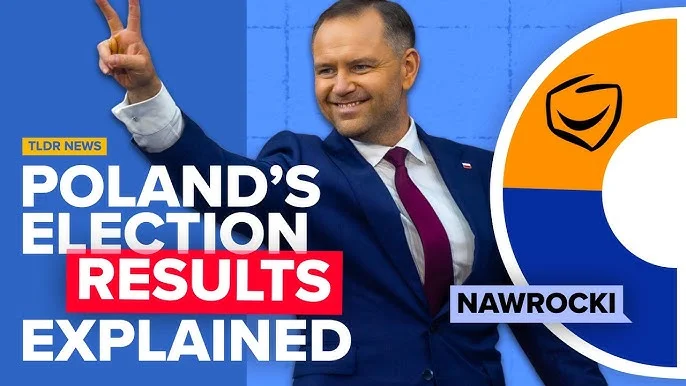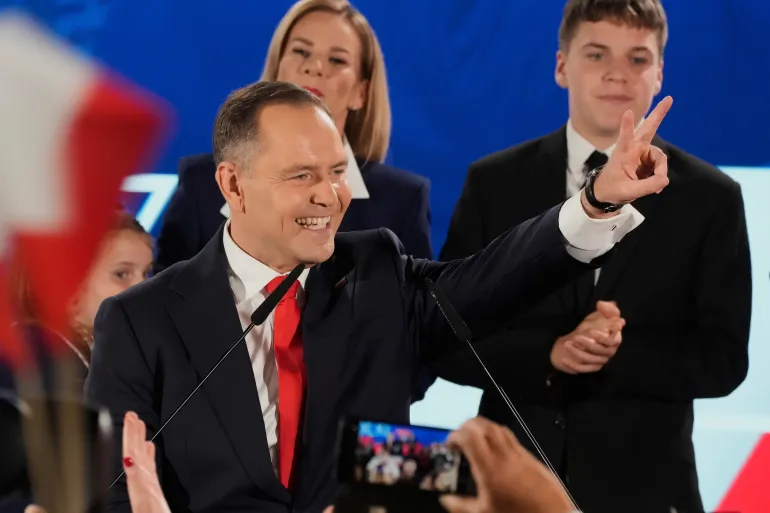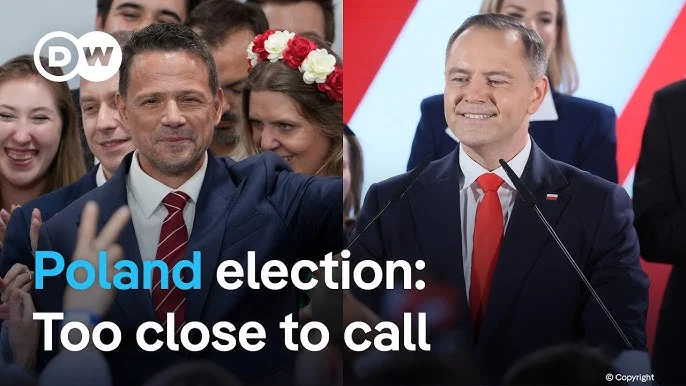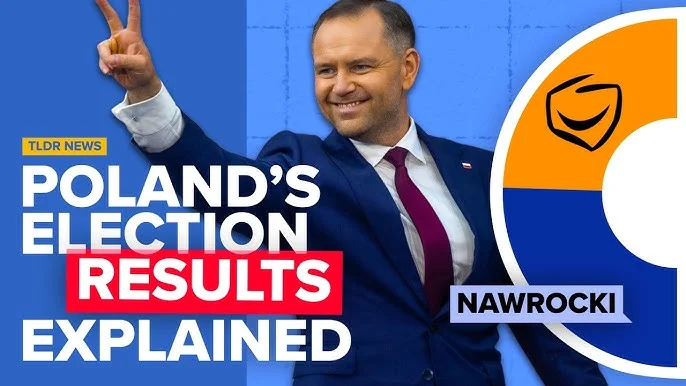
Table of Contents
2025 Poland Election: 15 Critical Insights That Reshaped the Nation’s Democratic Path

Poland Election
Poland Election 2025 general election wasn’t just another vote—it was a defining moment in European politics. As a frontline NATO member and a rising influencer in the EU, Poland’s political direction has major implications far beyond its borders.
Poland Election Political Relevance in Europe
Bordering war-torn Ukraine and sitting on the EU’s eastern flank, Poland is a vital bridge between Western democracy and Eastern geopolitics. Its leadership plays a pivotal role in the EU’s response to Russia, migration, energy, and more.
Rising Stakes Ahead of the 2025 Vote
With tensions high, the world waited anxiously for this election. Would Poland lean toward liberal democracy or stick with populist nationalism?
📜 A Quick Recap of Poland Election Political Landscape
A Decade of Tension Between Liberals and Conservatives
Since 2015, Poland has been caught in a tug-of-war between progressive values and nationalist conservatism. The ruling Law and Justice (PiS) party pushed a hard-right agenda, clashing with EU principles.
PiS vs Civic Coalition: The Ongoing Duel
PiS and Donald Tusk’s Civic Coalition represented starkly different visions for the country. The 2025 election was their most dramatic face-off yet.
🗳️ The 2025 Polish Poland Election at a Glance
Voter Turnout and Key Demographics
A stunning 74% turnout made this one of the most engaged elections in Polish history. First-time voters, women, and urban youth made a big impact.
Major Political Parties and Their Platforms
- Law and Justice (PiS): Nationalist, conservative, anti-immigration.
- Civic Coalition (KO): Pro-EU, progressive, focused on rule of law.
- Third Way & Left: Smaller but influential liberal-left alliances.
Poland Election Format and Voting Process
Poland uses a proportional representation system for parliament (Sejm and Senate), giving smaller parties a fighting chance to enter coalitions.

🔥 1. Record-Breaking Voter Turnout
This was no ordinary civic duty—it felt like a democratic uprising. Millions turned out to say, “We want change!” Protest votes flooded the ballots in what felt more like a referendum than an election.
🧠 2. Youth Vote Deciding the Outcome
Gen Z and younger Millennials rallied through social media, concerts, and flash mobs. These digital natives wanted environmental protection, women’s rights, and free speech.
👩 3. Women’s Rights Taking Center Stage
Poland’s near-total abortion ban had sparked mass protests in past years. In 2025, women showed their power at the polls. The Civic Coalition vowed to restore reproductive rights, and that message resonated.
👤 4. The Return of Donald Tusk
The former European Council President came back with a vengeance, rallying the opposition and igniting hope. Tusk’s EU credentials gave the opposition a global edge.
⚖️ 5. A Blow to Populism
PiS’s grip weakened. Anti-EU rhetoric, attacks on LGBTQ+ rights, and judiciary takeovers were rejected by the majority. Poland took a visible step away from Hungary-style authoritarianism.
🌍 6. Rural vs Urban Divide
City dwellers overwhelmingly voted for progress, while rural regions remained loyal to PiS. The cultural gap is widening but also evolving, with younger rural voters breaking ranks.
🛡️ 7. NATO and Ukraine at the Heart of the Debate
With Russia’s war raging just across the border, Poland’s military policies and alliances were vital topics. Civic leaders promised stronger cooperation with NATO and robust aid for Ukraine.

💰 8. Economic Promises that Won Votes
Inflation, energy costs, and job security were hot-button issues. Voters leaned toward parties with plans for raising wages and cutting food and fuel prices—KO promised just that.
📚 9. Judicial Independence: A Central Battle
The judiciary had been under siege for years. A major KO promise was to restore judicial autonomy and rebuild trust in constitutional order.
📰 10. Media Freedom in the Spotlight
State-controlled TV lost credibility. Independent journalism and influencers on platforms like YouTube and TikTok helped swing younger voters.
🌱 11. Climate and Green Energy Goals
Poland is still coal-dependent, but young voters demanded green policies. KO pledged renewable energy projects and EU-aligned environmental standards.
🇪🇺 12. Impact on the European Union
The EU had been clashing with Poland Election over rule-of-law violations. With a liberal win, relations are expected to thaw, unlocking billions in frozen EU funds.
🗳️ 13. Voter Sentiment and Social Movements
Grassroots campaigns played a massive role—from feminist marches to environmental protests, social activism turned political.
🏛️ 14. What’s Next for Polish Democracy?
Expect legal reforms, EU reintegration, and renewed democratic institutions. But challenges remain: political polarization, economic balancing, and rural resentment.
🌐 15. Global Reactions to Poland’s Vote
From Washington to Brussels to Kyiv, the reaction was swift—“Poland is back,” they said. The liberal wave sent ripples through every European capital.
🧾 Conclusion: A Defining Moment for Poland and Europe
Poland’s 2025 election wasn’t just about electing a new parliament—it was about choosing a new path. A path of inclusion, democracy, and progress. The voters have spoken, and the message is clear: Poland is embracing its future.
❓FAQs
1. Who won the 2025 Polish election?
The Civic Coalition, led by Donald Tusk, emerged as the largest force and is expected to form a coalition with pro-democracy parties.
2. What role did young voters play in the election?
Young voters played a decisive role, especially in urban areas, favoring liberal and green policies.
3. How will the results impact Poland’s relationship with the EU?
Expect a restoration of EU funding and better alignment with Brussels on democratic values and climate goals.
4. What was the biggest issue in the election?
The rule of law, abortion rights, economic stability, and Poland’s role in NATO and Ukraine were top issues.
5. Is Poland moving away from populism?
Yes. The 2025 election signaled a significant move toward liberal democracy and EU-friendly policies.















Leave a Reply